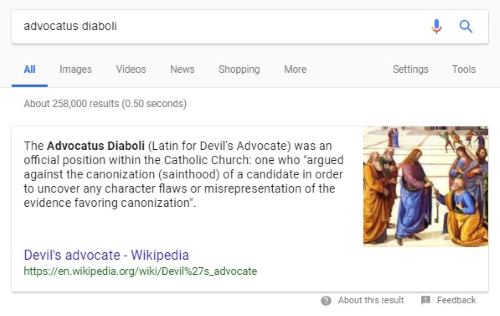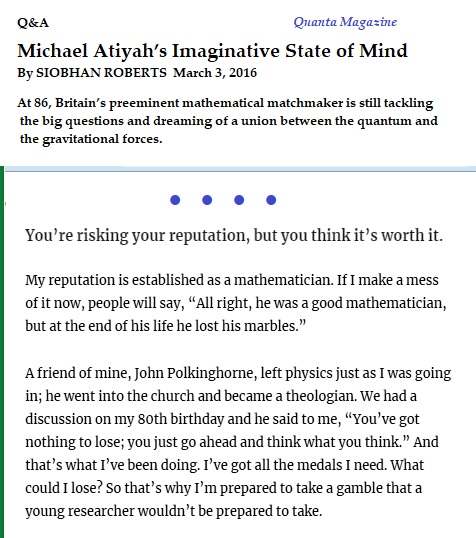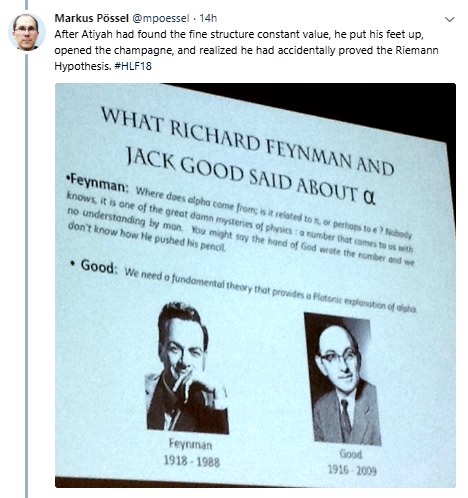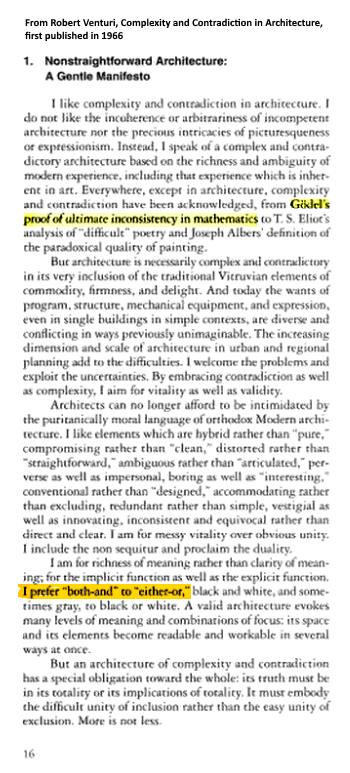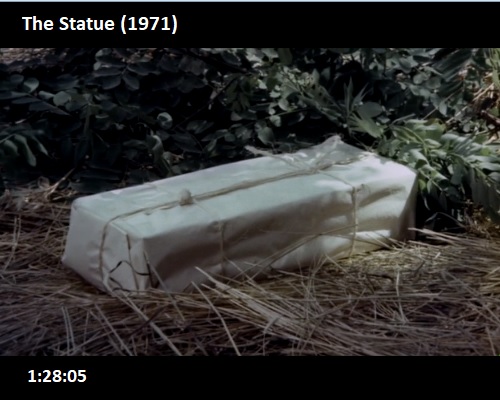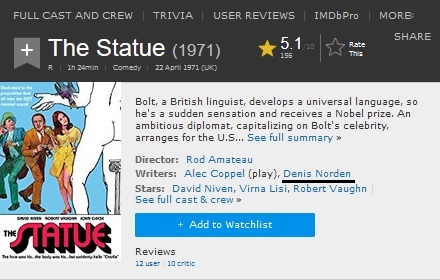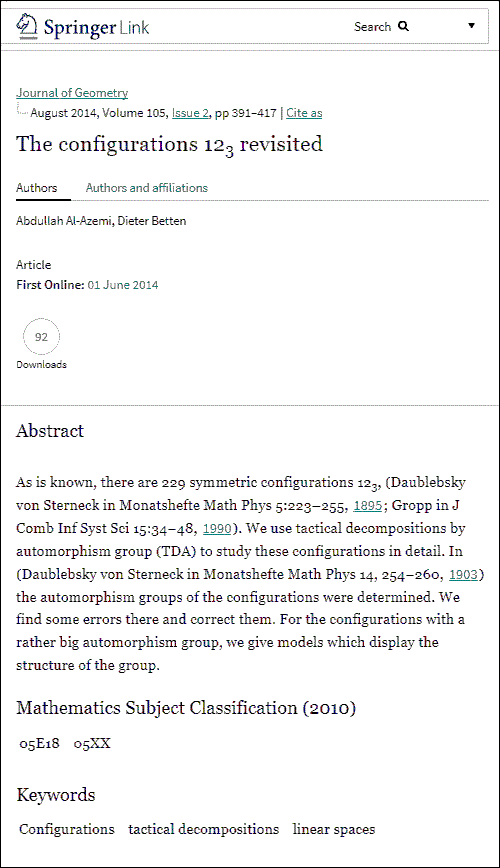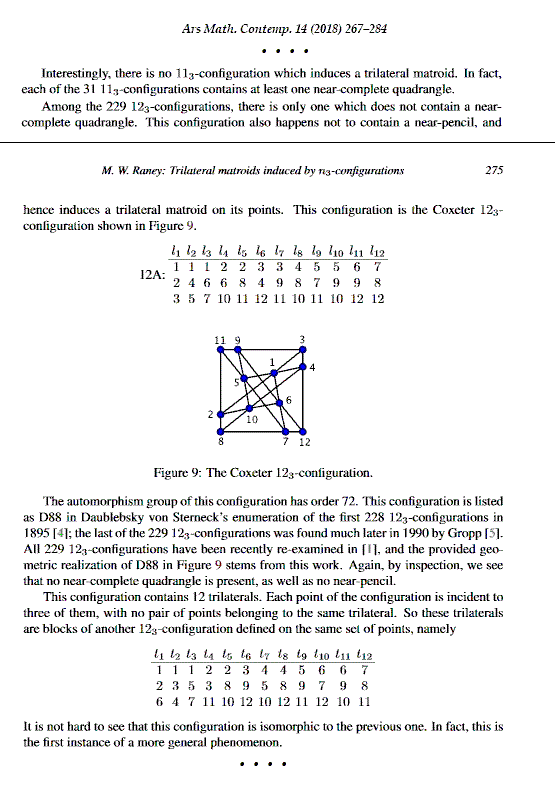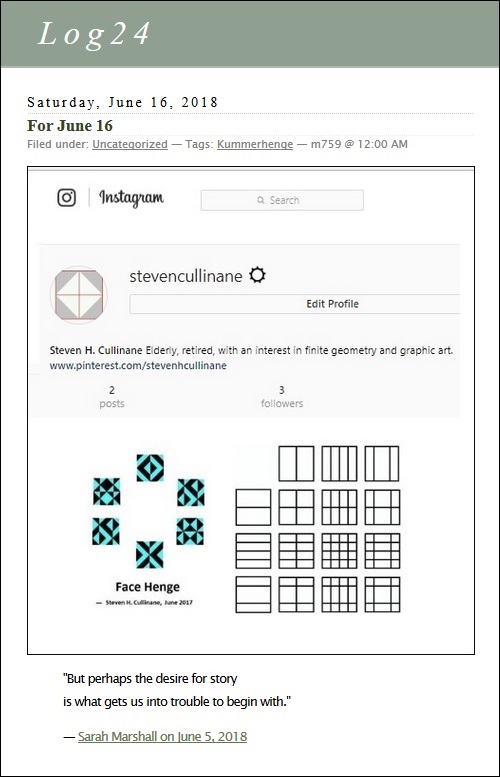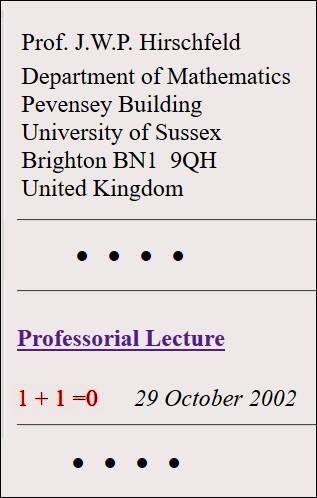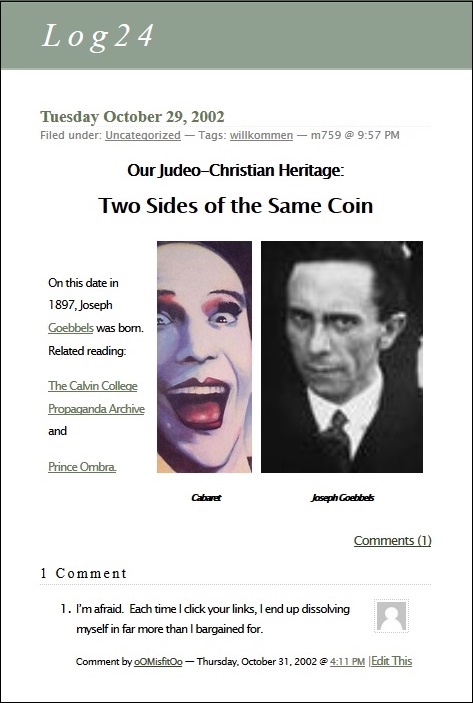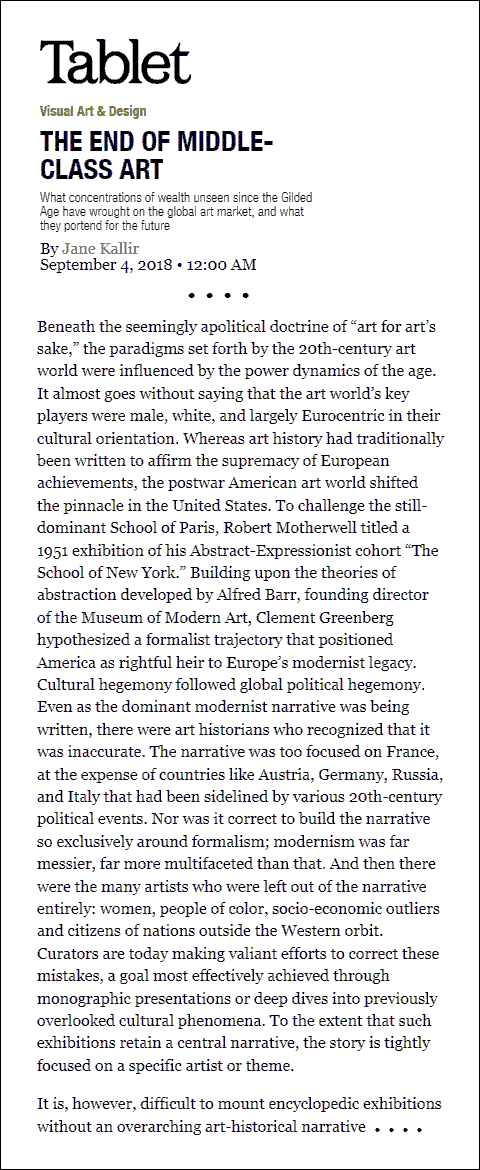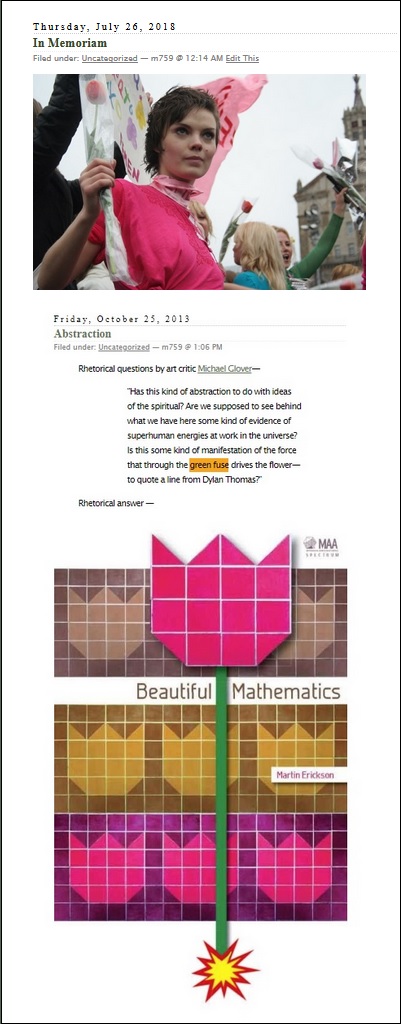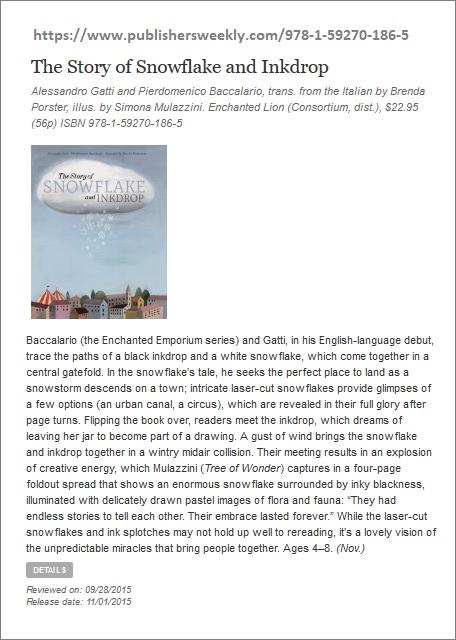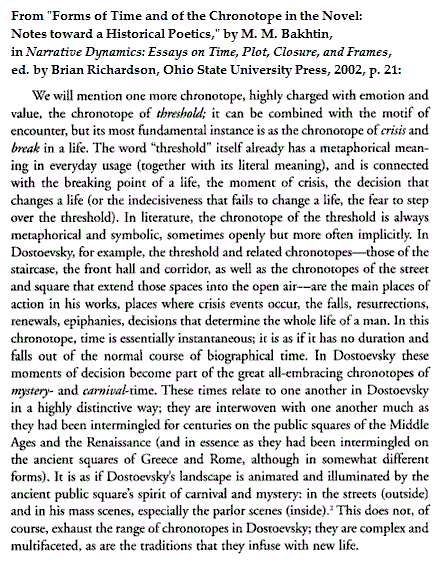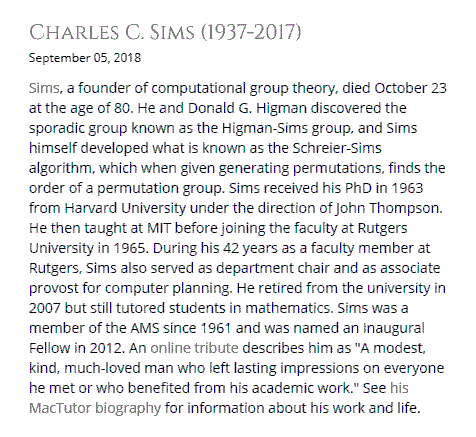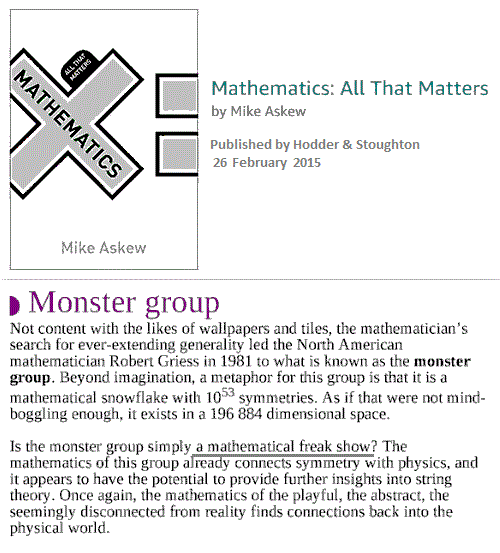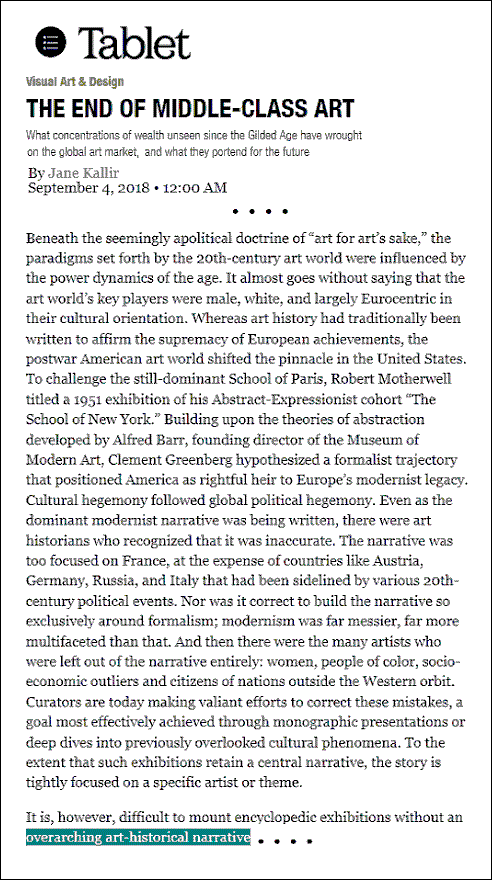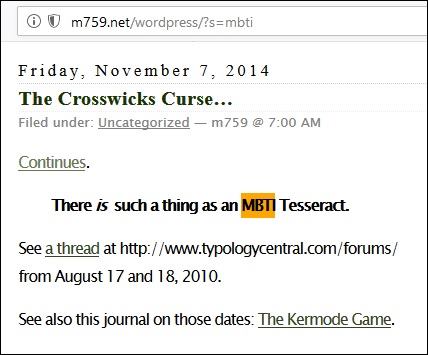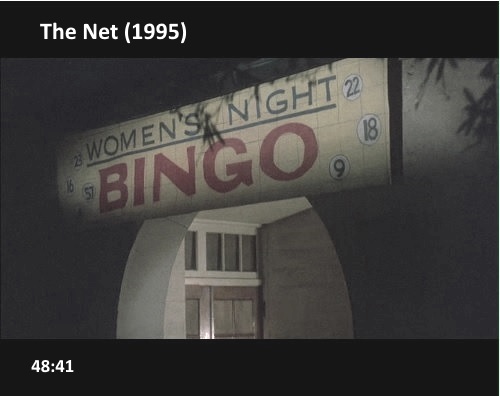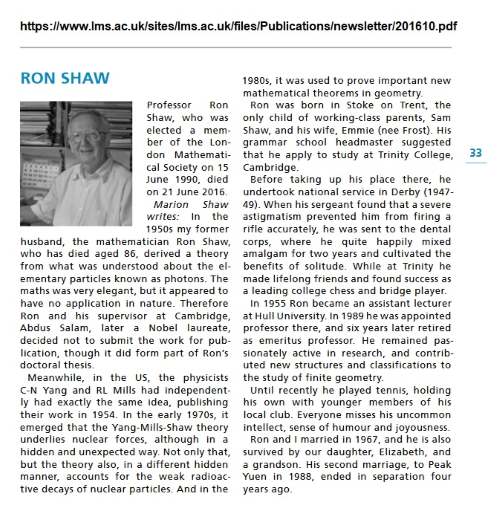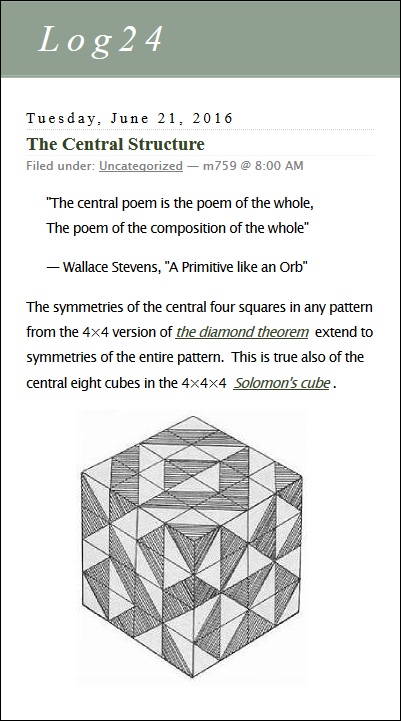Click the above for an example.
Sunday, September 30, 2018
Advocate
Iconology of the Eightfold Cube
Found today in an Internet image search, from the website of
an anonymous amateur mathematics enthusiast —
Forming Gray codes in the eightfold cube with the eight
I Ching trigrams (bagua ) —
This journal on Nov. 7, 2016 —
A different sort of cube, from the makers of the recent
Netflix miniseries "Maniac" —

See also Rubik in this journal.
Saturday, September 29, 2018
“Ikonologie des Zwischenraums”
The title is from Warburg. The Zwischenraum lines and shaded "cuts"
below are to be added together in characteristic two, i.e., via the
set-theoretic symmetric difference operator.
Friday, September 28, 2018
ART WARS Midrash
"When times are mysterious
Serious numbers
Will always be heard."
— Paul Simon,
"When Numbers Get Serious"
"There is a pleasantly discursive treatment of
Pontius Pilate's unanswered question 'What is truth?'"
— H. S. M. Coxeter, introduction to Richard J. Trudeau's remarks
on the "story theory" of truth as opposed to the "diamond theory"
of truth in The Non-Euclidean Revolution (1987)
The deaths of Roth and Grünbaum on September 14th,
The Feast of the Holy Cross, along with Douthat's column
today titled "Only the Truth Can Save Us Now," suggest a
review of …
Thursday, September 27, 2018
Branko Grünbaum, 1929-2018
See an American Mathematical Society obituary
and a Seattle Times obituary.
Cube Meditation

See also "Eternal Recreation" (Christmas Eve, 2012).
Wednesday, September 26, 2018
Analogies Between Analogies
On the new Netflix series "Maniac" —
"The treatment Owen and Annie sign up for promises to fix
its subjects’ brains with just three little pills—A, B, and C—
administered one after another over the span of three days.
The first forces you to relive your trauma;
the second exposes your blind spots; and
the third pill forces a confrontation."
— Kara Weisenstein at vice.com, Sept. 26, 2018, 12:19 PM
See also, from Log24 earlier …
A. Monday — Mathematics as Art
B. Tuesday — Trinity and Denkraum Revisited
C. Wednesday — Trinity Tale
Trinity Tale
Tuesday, September 25, 2018
Denkraum Revisited
See also this journal on Sept. 14
and related posts tagged Interstice.
Trinity
See some posts related to three names
associated with Trinity College, Cambridge —
Monday, September 24, 2018
Mathematics as Art
[Revised throughout the day on Sept. 24, 2018.]
"Mathematics may be art, but to the general public it is
a black art, more akin to magic and mystery. This presents
a constant challenge to the mathematical community: to explain
how art fits into our subject and what we mean by beauty."
— Sir Michael Atiyah, quoted here on April 4, 2016
Atiyah's remarks today on the Riemann hypothesis, based on his earlier
remarks on "arithmetic physics" and α, the fine-structure constant,
seem to exemplify the "magic and mystery" approach.
From some previous Log24 posts —


Update of 6:06 PM ET the same day —
https://twitter.com/mpoessel/status/1044131977950109696 —
For related magic and mystery, see Log24 posts tagged on090405.
Sunday, September 23, 2018
Three Times Eight
The New York Times 's Sunday School today —
I prefer the three bricks of the Miracle Octad Generator —
Saturday, September 22, 2018
Minimalist Configuration
The Venturi Manifesto
Venturi reportedly died on Tuesday, September 18.*
See also this journal on that date.
* Fact check:
Symmetric Generation, by Curtis
Norwegian artist Josefine Lyche —
Lyche's shirt honors the late Kurt Cobain.
"Here we are now, entertain us."
Symmetric Generation, by Netflix
Friday, September 21, 2018
Symmetric Generation, by Nao
"The creation of a new world
starts now.
Once again I am tied
to the logic of this
Hyper-symmetrical-dimension."
Thursday, September 20, 2018
1971 Mystery Box
Vincent Canby in The New York Times ,
January 28, 1971, reviews the film "The Statue" —
There is not much point in going into the dialogue,
but you'll get the idea from the line spoken by
a little girl who is shown gazing in wonderment
at the copy of Michelangelo's work in the
Piazza della Signoria in Florence.
"Golly," she says, "if that's David, I'd like to see Goliath!"
"The Statue" may have the distinction of being the first
adolescent comedy about penis envy.
In keeping with filmmaker J.J. Abrams's philosophy of the "mystery box" —
Canby's phrase "you'll get the idea" suggests a Log24 review . . .
Wednesday, September 19, 2018
In Memoriam:
Denis Mostyn Norden, writer, broadcaster and television presenter,
born 6 February 1922; died 19 September 2018.
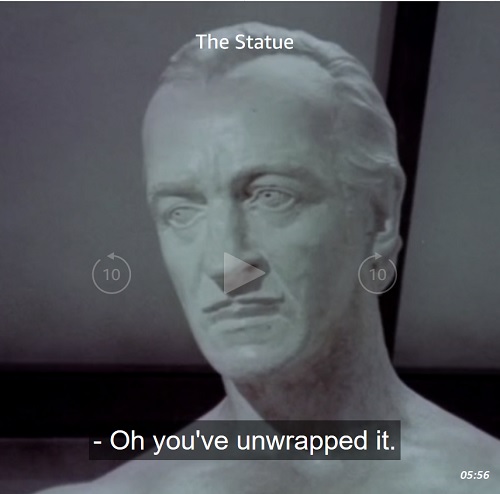
For Abraham Warburg —
"Que cantaba el Rey David."
Tuesday, September 18, 2018
Monday, September 17, 2018
Lying at the Axis
Or: Zero Dark Zero

|
" Lying at the axis of everything, zero is both real and imaginary. Lovelace was fascinated by zero; as was Gottfried Leibniz, for whom, like mathematics itself, it had a spiritual dimension. It was this that let him to imagine the binary numbers that now lie at the heart of computers: 'the creation of all things out of nothing through God's omnipotence, it might be said that nothing is a better analogy to, or even demonstration of such creation than the origin of numbers as here represented, using only unity and zero or nothing.' He also wrote, 'The imaginary number is a fine and wonderful recourse of the divine spirit, almost an amphibian between being and nonbeing.' "
— A footnote from page 229 of Sydney Padua's |
Sunday, September 16, 2018
Data
<h1 id="top"> Bacow Heads to Home State of Michigan In Quest to Fix Harvard’s Image Problem </h1> <div class="article-byline" style="display: none;"> By <a href='/writer/1213317/Kristine_E._Guillaume/'> Kristine E. Guillaume</a> and <a href='/writer/1213264/Jamie_D._Halper/'> Jamie D. Halper</a>, Crimson Staff Writers <time class="article-date" datetime="2018-09-16T23:04:29-04:00" title="Updated September 16, 2018 at 11:04p.m."> September 16, 2018 </time> </div>
Husserl for Beginners
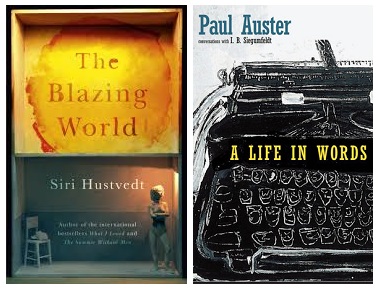
See also Trivial + Affine and Eidetic Reduction.
Saturday, September 15, 2018
Satire on Saturday Night
See as well some other remarks from March 28, 2014.
Ig Nobel “One Plus One”
Jean-Luc Godard in this journal on Thursday —
"I perceived . . . cinema is that which is between things,
not things [themselves] but between one and another."
Also on Thursday —
"Scientific luminaries gathered at Harvard University’s
historic Sanders Theatre on Thursday to honor
notable achievements this year…. It was the
28th First Annual Ig Nobel Prize Ceremony …."
Axioms
Update of 10:18 AM the same day —
See also Logicomix in this journal and, at Harvard,
http://www.math.harvard.edu/~mazur/ —
-
September 6, 2018: Eric Maskin, Amartya Sen and I
are giving a course this semester: 'Axiomatic Reasoning'
(PHIL 273B). Introduction to Axiomatic Reasoning gives a
general sense of what we intend to cover.
Update of 10:48 AM the same day —
See Log24 on the date of Tieszen's death.
Eidetic Reduction in Geometry
|
"Husserl is not the greatest philosopher of all times. — Kurt Gödel as quoted by Gian-Carlo Rota Some results from a Google search — Eidetic reduction | philosophy | Britannica.com Eidetic reduction, in phenomenology, a method by which the philosopher moves from the consciousness of individual and concrete objects to the transempirical realm of pure essences and thus achieves an intuition of the eidos (Greek: “shape”) of a thing—i.e., of what it is in its invariable and essential structure, apart … Phenomenology Online » Eidetic Reduction
The eidetic reduction: eidos. Method: Bracket all incidental meaning and ask: what are some of the possible invariate aspects of this experience? The research Eidetic reduction – New World Encyclopedia Sep 19, 2017 – Eidetic reduction is a technique in Husserlian phenomenology, used to identify the essential components of the given phenomenon or experience. |
For example —
The reduction of two-colorings and four-colorings of a square or cubic
array of subsquares or subcubes to lines, sets of lines, cuts, or sets of
cuts between* the subsquares or subcubes.
See the diamond theorem and the eightfold cube.
* Cf. posts tagged Interality and Interstice.
Friday, September 14, 2018
Warburg at Cornell, Continued
Denkraum
Underlying the I Ching structure is the finite affine space
of six dimensions over the Galois field with two elements.
In this field, "1 + 1 = 0," as noted here Wednesday.
See also other posts now tagged Interstice.
Thursday, September 13, 2018
Iconology of the Interstice
The title is from the 2013 paper by Latsis in the previous post.
The symmetries of the interstices at right underlie
the symmetries of the images at left.
Godard and Interality
The previous post, "One Plus One," suggests some further
art-historical remarks on interality —
|
From Third Text , 2013, Vol. 27, No. 6, pp. 774–785 — "Genealogy of the Image in Histoire(s) du Cinéma : Godard, Warburg and the Iconology of the Interstice" * * * * P. 775 — My discussion will focus on the significance of the concept of the ‘space in-between,’ its importance for Godard’s work and its role in a relational historiography of images more broadly. I hope to corroborate how Godard functions as a twenty-first century archaeologist of the moving image, constructing a meta-cinematic collage that, while consisting of an indexing of (almost exclusively) pre-existing filmic samples, ends up becoming a hybrid work of art in its own right. Godard, in the final analysis, expands the Warburgian programme of iconology into that of a cinematographic iconology of the interstice. * * * * P. 777 — Godard conceives of the image only in the plural, in the intermediate space between two images, be it a prolonged one (in Histoire(s) there are frequent instances of black screens) or a non-existent one (superimposition, co-presence of two images on screen). He comments: ‘[For me] it’s always two, begin by showing two images rather than one, that’s what I call image, the one made up of two’ [18] and elsewhere, ‘I perceived . . . cinema is that which is between things, not things [themselves] but between one and another.’ [19] 18. Jean-Luc Godard and Youssef Ishaghpour, "Archéologie du cinéma et mémoire du siècle," Farrago ,Tours, 2000, p. 27. The title of this work is reflective of the Godardian agenda that permeates Histoire(s) . 19. Jean-Luc Godard, "Introduction à une véritable histoire du cinéma," Albatros , Paris,1980, p. 145 * * * * P. 783 — If it is in ‘the in-between’ that thought is born, then for Godard cinematography as ‘a form that thinks . . . was born with the advent of modern painting.’ [62] 62. Godard and Ishaghpour, op. cit., pp 45–46. * * * * P. 785 — Warburg commented on the signification of the black spaces that he placed between images in his analysis of the network of intervals in Mnemosyne , by quoting Johann Wolfgang Goethe’s dictum ‘the truth inhabits the middle space.’ [68] This citation induces a feeling of déjà-vu for the viewer of Histoire(s). The link was not missed by Warburg himself, as one of his diary entries testifies: ‘We can compare this phenomenon [the iconology of the interval] to that of the cinematic montage, the domain of the interpretation is an intervallic one.’ [69] 68. Warburg, Mnemosyne , pp 135–146. 69. Warburg is quoted in Didi-Huberman, L’image survivante, p. 503. (Georges Didi-Huberman, L’image survivante. Histoire de l’art et temps des fantômes selon Aby Warburg , Minuit, Paris, 2002) |
Wednesday, September 12, 2018
Tuesday, September 11, 2018
By Fritz Leiber
Monday, September 10, 2018
Your OS

|
"Alan Watts wrote of The Making of a Counter Culture in the San Francisco Chronicle in 1969, 'If you want to know what is happening among your intelligent and mysteriously rebellious children, this is the book. The generation gap, the student uproar, the New Left, the beats and hippies, the psychedelic movement, rock music, the revival of occultism and mysticism, the protest against our involvement in Vietnam, and the seemingly odd reluctance of the young to buy the affluent technological society—all these matters are here discussed, with sympathy and constructive criticism, by a most articulate, wise, and humane historian.' " |
"Please wait as your operating system is initiated."
Sunday, September 9, 2018
Plan 9 Continues.
"The role of Desargues's theorem was not understood until
the Desargues configuration was discovered. For example,
the fundamental role of Desargues's theorem in the coordinatization
of synthetic projective geometry can only be understood in the light
of the Desargues configuration.
Thus, even as simple a formal statement as Desargues's theorem
is not quite what it purports to be. The statement of Desargues's theorem
pretends to be definitive, but in reality it is only the tip of an iceberg
of connections with other facts of mathematics."
— From p. 192 of "The Phenomenology of Mathematical Proof,"
by Gian-Carlo Rota, in Synthese , Vol. 111, No. 2, Proof and Progress
in Mathematics (May, 1997), pp. 183-196. Published by: Springer.
Stable URL: https://www.jstor.org/stable/20117627.
Related figures —
Note the 3×3 subsquare containing the triangles ABC, etc.
"That in which space itself is contained" — Wallace Stevens
Saturday, September 8, 2018
Friday, September 7, 2018
The Enormous Snowflake
A literary reference suggested by the previous post and by
today's 2 AM post "Show" —
See also Snowflake in this journal.
Carnival and Mystery
A Square for Sims
The American Mathematical Society on Wednesday, September 5,
reported a death from October 23 last year —
See also Higman-Sims and 5×5 in this journal.
Show
Thursday, September 6, 2018
Identity Crisis
(Continued from 12 AM Sept. 4)
|
New York Times Sept. 6, 2018 Identity — whatever that even means — has been having a moment, lately. The political climate forces us all to decide grimly what bunker will welcome us, and the new culture wars spur people to define themselves before somebody else does it for them to possibly violent effect. Identity may be abstract and elusive, but that doesn’t mean it doesn’t have real-world consequences. So our recommended titles this week turn a spotlight on the subject, from Francis Fukuyama’s “Identity” to Kwame Anthony Appiah’s “The Lies That Bind” to two books about identity politics on college campuses: “The Splintering of the American Mind,” by William Egginton, and “The Coddling of the American Mind,” by Greg Lukianoff and Jonathan Haidt. (Those similar titles are no coincidence: Both books hark back to Allan Bloom’s classic “The Closing of the American Mind.”) We also have a book about the Spanish man who for decades falsely claimed to be a Holocaust survivor, and a joint biography of the mother and daughter who gave their names to the Myers-Briggs personality test. In other realms, there’s a biography of the tennis legend Arthur Ashe; new fiction from Gary Shteyngart, Ben Marcus and Tsitsi Dangarembga; and an essay collection about the role of the “dead girl” in popular culture, which posits that — in that case, anyway — the absence of identity is the whole point.
Gregory Cowles |
See also Identity + Paz in this journal.
Wednesday, September 5, 2018
Multifaceted Narrative

See also, in this journal, 23-cycle.
Update of Sept. 6, 2018, 9:05 AM ET: "The Cubist Method" —
Multifaceted narrative by James Joyce —
Multifaceted structures in pure mathematics, from Plato and R. T. Curtis —

Midnight Art
See also 12 AM Sept. 4 in this journal, "Identity Crisis."
Related material — "Overarching" in this journal.
Update of 4:12 AM ET —
The name of the New Yorker artist in the Identity Crisis post,
Tamara Shopsin, has now been added to the illustrated excerpt.
See as well . . .
https://www.nytimes.com/2018/09/04/obituaries/
kenny-shopsin-dead.html.
itemprop="datePublished"
content="2018-09-04T22:17:59.000Z"
Tuesday, September 4, 2018
MBTI at the Church of St. Frank*
Monday, September 3, 2018
Wolfenstein
Sunday, September 2, 2018
Saturday, September 1, 2018
Another 48 Hours

Backstory: See The Plaid Overnight Case in this journal.
See as well a post from 10:16 PM ET Thursday, August 30, 2018.
Nicht Spielerei
"The absence of adults forces children to practice their social skills."
This is from . . .
See also . . .

The Enlivened Obituary
" Martin Shubik, an economist whose prescient visions
of a computerized world and pioneering applications
of game theory to everyday life enlivened what has been
described as the dismal science, died on Aug. 22 at his
home in Branford, Conn. He was 92."
— Sam Roberts in The New York Times yesterday
From Sylvia Nasar's A Beautiful Mind —
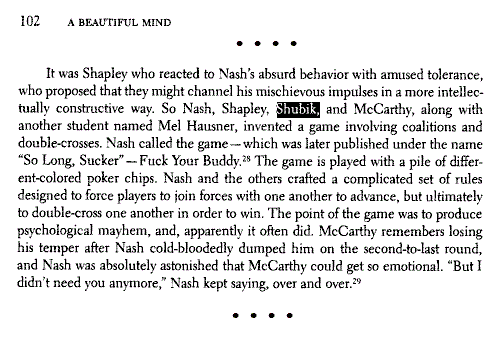
Ron Shaw — D. 21 June 2016
The date of Ron Shaw's 2016 death appears to be June 21:
All other Internet sources I have seen omit the June 21 date.
This journal on that date —
